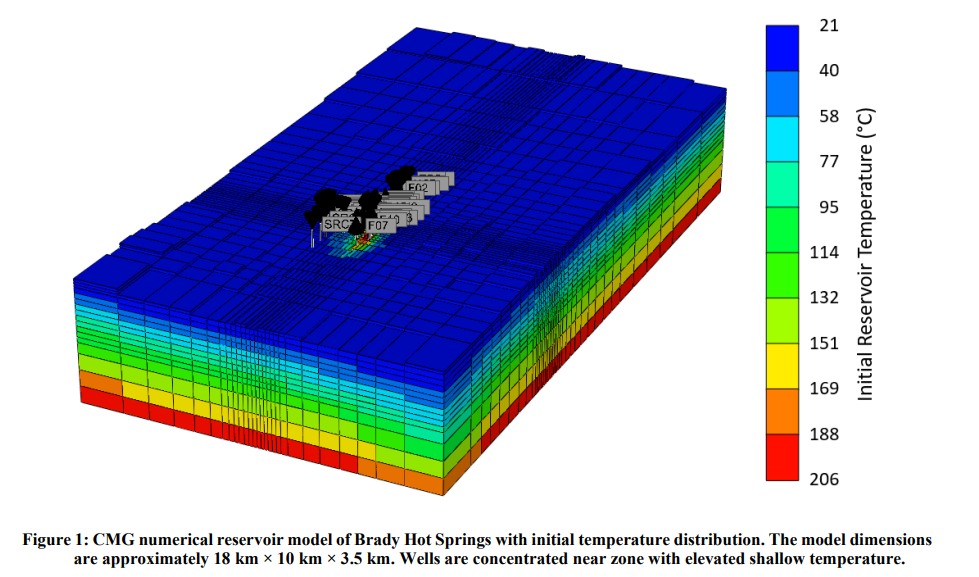Subsurface Characterization and Machine Learning Predictions at Brady Hot Springs
地层数据分析、储层模拟和机器学习(ML)技术已应用于美国内华达州布雷迪温泉(BHS)地热田,以进一步表征地下参数,并协助优化储层管理。采用TETRAD-G和CMG STARS软件进行了数百次储层模拟,研究不同回注和排采流体流量和分配,并为机器学习(ML)开发一个训练数据集。该过程包括模拟1979年以来的历史回注和排采,以及预测到2040年的开发效果。
ML网络是使用基于多层感知、长短时记忆和卷积神经网络结构TensorFlow创建和训练的。这些网络将选定的流速、注入温度和历史现场作业数据作为输入,并生成未来生产温度的预估值。该方法首先在简化的单裂缝双重系统上成功测试,然后应用于BHS地热层。
使用初始BHS数据集模拟了37个场景,经过训练和验证的网络预测了六口生产井的生产温度,平均绝对误差小于8%。在后续研究中,对13个BHS地质参数进行的主控因素分析,结果表明:垂直裂缝渗透率与断层密度和断层相交密度的相关性最强。通过建立一个新的BHS储层模型,考虑了断层交叉密度作为渗透率的代理模型。新模型有助于勘探储层中未开采的区域。制定了获取额外地下数据的数据收集计划;包括三口闲置注入井的温度测量,这些井的储层模拟显示井底温度较高。收集的数据有助于校准储层模型。计划在2021第一季度开展数据收集活动。
ABSTRACT
Subsurface data analysis, reservoir modeling, and machine learning (ML) techniques have been applied to the Brady Hot Springs (BHS) geothermal field in Nevada, USA to further characterize the subsurface and assist with optimizing reservoir management. Hundreds of reservoir simulations have been conducted in TETRAD-G and CMG STARS to explore different injection and production fluid flow rates and allocations and to develop a training data set for ML. This process included simulating the historical injection and production since 1979 and prediction of future performance through 2040. ML networks were created and trained using TensorFlow based on multilayer perceptron, long short-term memory, and convolutional neural network architectures. These networks took as input selected flow rates, injection temperatures, and historical field operation data and produced estimates of future production temperatures. This approach was first successfully tested on a simplified single-fracture doublet system, followed by the application to the BHS reservoir.
Using an initial BHS data set with 37 simulated scenarios, the trained and validated network predicted the production temperature for six production wells with the mean absolute percentage error of less than 8%. In a complementary analysis effort, the principal component analysis applied to 13 BHS geological parameters revealed that vertical fracture permeability shows the strongest correlation with fault density and fault intersection density. A new BHS reservoir model was developed considering the fault intersection density as proxy for permeability. This new reservoir model helps to explore under exploited zones in the reservoir. A data gathering plan to obtain additional subsurface data was developed; it includes temperature surveying for three idle injection wells at which the reservoir simulations indicate high bottom-hole temperatures. The collected data assist with calibrating the reservoir model. Data gathering activities are planned for the first quarter of 2021.
Keywords: Brady Hot Springs, Machine Learning, Geothermal Reservoir Modeling, Time Series Predictions, Principal Component Analysis


